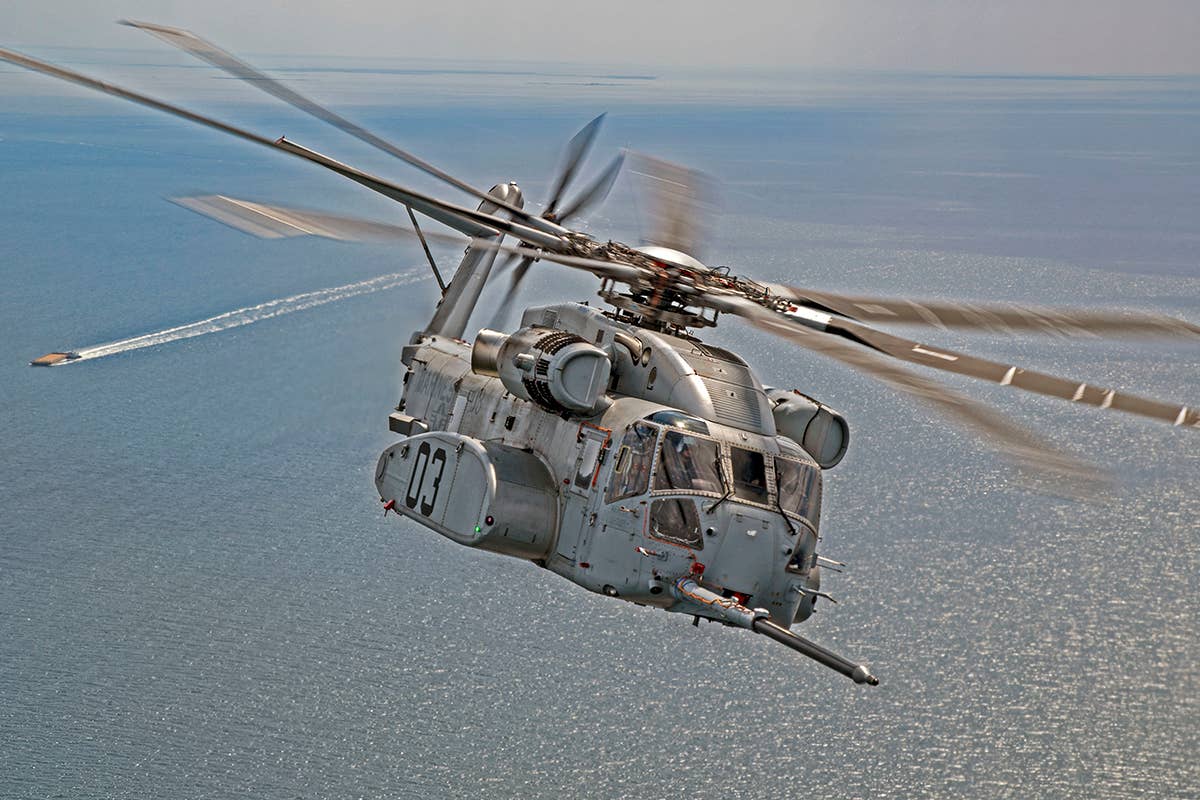Marine Corps To Add New CH-53K King Stallion Simulators
Lockheed Martin has been awarded a contract to deliver a containerized flight training device (CFTD) to the U.S. Navy with options for three more.

The CH-53K King Stallion boasts an external load capacity of up to 27,000 pounds at up to 110 nm while operating at high altitudes and in hot environments. [Courtesy: U.S. Department of Defense/Victoria Falcon]
More U.S. Marine Corps heavy-lift air crews will soon have access to new CH-53K King Stallion flight simulators for training, Lockheed Martin announced.
The company was recently awarded a contract to deliver a containerized flight training device (CFTD) to the U.S. Navy with options for three more, Lockheed said Wednesday. A contract amount was not disclosed.
The news comes about a month after Marine Corps Air Station New River in Jacksonville, North Carolina, took delivery of the service's seventh CH-53K heavy-lift helicopter. The long-range, sea-based aircraft—produced by Lockheed Martin subsidiary Sikorsky—is billed as a boost to the service's heavy-lift capability. The helicopter boasts an external load capacity of up to 27,000 pounds at up to 110 nm while operating at high altitudes and in hot environments.
By comparison, the Marine’s CH-53E Super Stallion, a heavy-lift workhorse which became operational more than three decades ago, would be limited to an external load of less than 10,000 pounds in the same environment, according to Marine Corps aviation officials.
In late April, the Marine Corps announced it had achieved initial operational capability criteria for the CH-53K program and was on track to deploy the first CH-53K Marine Expeditionary Unit detachment in fiscal year 2024.
About the CFTD
The CFTDs are portable and include a full CH-53K cockpit operated by a pilot and copilot, as well as an instructor operating station and a brief/debrief room, Lockheed said.
The Marine Corps received its first full-mission CFTD in 2020, which has allowed aircrews to train for a variety of missions, including day and night air-to-air refueling, air-to-air refueling with a 27,000-pound external load, sea trials with more than 350 landings, and flight operations in degraded visual environments.
“Marine [Corps] pilots have smoothly transitioned from the training device to the actual CH-53K’s fly-by-wire cockpit and completed missions in the fleet environment—such as air-to-air refueling,” Flash Kinloch, Lockheed Martin vice president of training and simulation solutions, said in a statement. “Training in this highly immersive virtual environment permits flight crews to train the full scope of tasks that can be performed on the aircraft in a safe, cost effective and realistic manner.”
Increased Use of Tech for Pilot Training
Military aviation is increasingly turning to tech solutions for creating immersive and simulated conditions as part of pilot training. Last month, for example, the U.S. Air Force said it has integrated hundreds of immersive training devices that allow physical and visual interaction with flight controls and avionics into its pilot training system as it prepares to divest its fleet of aging T-1A Jayhawk training aircraft.
In April, the U.S. Air Force took delivery of a new high-fidelity, full-motion flight simulator for the E-4B Nightwatch “Doomsday Plane." The simulator is designed to replicate flight operations and aerial refueling for the aircraft that is designed to serve, if necessary, as a command platform for high-level military operations, including a U.S. nuclear weapons strike.

Sign-up for newsletters & special offers!
Get the latest FLYING stories & special offers delivered directly to your inbox






